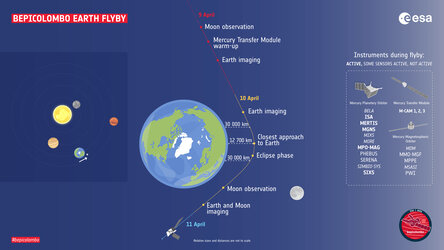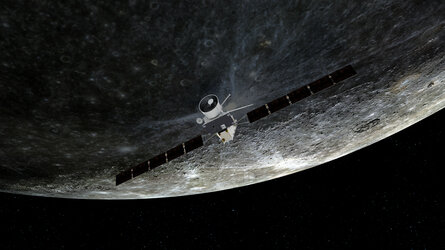Accept all cookies Accept only essential cookies See our Cookie Notice

About ESA
The European Space Agency (ESA) is Europe’s gateway to space. Its mission is to shape the development of Europe’s space capability and ensure that investment in space continues to deliver benefits to the citizens of Europe and the world.
Highlights
ESA - United space in Europe
This is ESA ESA facts Member States & Cooperating States Funding Director General Top management For Member State Delegations European vision European Space Policy ESA & EU Space Councils Responsibility & Sustainability Annual Report Calendar of meetings Corporate newsEstablishments & sites
ESA Headquarters ESA ESTEC ESA ESOC ESA ESRIN ESA EAC ESA ESAC Europe's Spaceport ESA ESEC ESA ECSAT Brussels Office Washington OfficeWorking with ESA
Business with ESA ESA Commercialisation Gateway Law at ESA Careers Cyber resilience at ESA IT at ESA Newsroom Partnerships Merchandising Licence Education Open Space Innovation Platform Integrity and Reporting Administrative Tribunal Health and SafetyMore about ESA
History ESA Historical Archives Exhibitions Publications Art & Culture ESA Merchandise Kids Diversity ESA Brand Centre ESA ChampionsLatest
Space in Member States
Find out more about space activities in our 23 Member States, and understand how ESA works together with their national agencies, institutions and organisations.
Science & Exploration
Exploring our Solar System and unlocking the secrets of the Universe
Go to topicAstronauts
Missions
Juice Euclid Webb Solar Orbiter BepiColombo Gaia ExoMars Cheops Exoplanet missions More missionsActivities
International Space Station Orion service module Gateway Concordia Caves & Pangaea BenefitsLatest
Space Safety
Protecting life and infrastructure on Earth and in orbit
Go to topicAsteroids
Asteroids and Planetary Defence Asteroid danger explained Flyeye telescope: asteroid detection Hera mission: asteroid deflection Near-Earth Object Coordination CentreSpace junk
About space debris Space debris by the numbers Space Environment Report In space refuelling, refurbishing and removingSafety from space
Clean Space ecodesign Zero Debris Technologies Space for Earth Supporting Sustainable DevelopmentLatest
Applications
Using space to benefit citizens and meet future challenges on Earth
Go to topicObserving the Earth
Observing the Earth Future EO Copernicus Meteorology Space for our climate Satellite missionsCommercialisation
ESA Commercialisation Gateway Open Space Innovation Platform Business Incubation ESA Space SolutionsLatest
Enabling & Support
Making space accessible and developing the technologies for the future
Go to topicBuilding missions
Space Engineering and Technology Test centre Laboratories Concurrent Design Facility Preparing for the future Shaping the Future Discovery and Preparation Advanced Concepts TeamSpace transportation
Space Transportation Ariane Vega Space Rider Future space transportation Boost! Europe's Spaceport Launches from Europe's Spaceport from 2012Latest
BepiColombo’s Earth flyby – a final goodbye
Thank you for liking
You have already liked this page, you can only like it once!
BepiColombo is a joint ESA - JAXA mission to Mercury. It was launched on an Ariane 5 rocket from Europe’s spaceport in Kourou, French Guiana, on 20 October 2018.
During its seven year Journey, BepiColombo will perform multiple fly-bys of Earth, Venus and Mercury itself before entering into orbit around the innermost planet on 5 December 2025.
This simulation shows BepiColombo’s first and only Earth fly-by on Friday 10 April 2020, in an ‘inertial frame’ – where the spacecraft is moving in relation to a still Earth.
More than a year after its launch, this will be the last time BepiColombo will be so close to home, and is our final chance to wave goodbye.
The perigee (point of closest approach) is highlighted as a dot on the cyan-coloured trajectory, and will be passed at 04:24 UTC (06:24 CET). During the flyby, Earth’s strong gravity will deflect the trajectory of BepiColombo. This can be clearly seen as it dives below the equatorial plane (blue).
Local conditions permitting, BepiColombo can be expected to be observable from Brazil first. It should reach 10 degrees of elevation for a local observer in Rio de Janeiro just before the perigee pass. Shortly after, observers all over Latin America, from Chile to Mexico, will have a chance to see the spacecraft before it enters into Earth’s shadow at 05:01 UTC (03:01 in Rio, 01:01 in Chile, 00:01 in Peru, 23:01 in Mexico).
This animation illustrates observing locations in Rio de Janeiro, Mexico City, the Very Large Telescope in northern Chile, Los Angeles and Victoria. These are represented by the ‘local zenith axis’ (lines sticking up from Earth’s surface) and the ‘local visibility cone’ – a 10 degree minimum elevation over the local horizon. These cones are shown in green while observations are possible, and in orange when BepiColombo is not observable.
BepiColombo will be in Earth’s shadow for 33 minutes. During this time, it cannot be observed. At 05:34 UTC (07:34 CET), the spacecraft will re-emerge from the shadow becoming visible to most of North and South America while it quickly flies away from Earth into the vastness of interplanetary space.
The distance to BepiColombo (or ‘Range’) and the angles between the Sun, spacecraft and observers in North and South America, are displayed on the left hand side.
Disclaimer: The spacecraft is not to scale and shown in an arbitrary attitude not representing the actual attitude during the fly-by.
Credits:
Earth Texture: NASA Goddard Space Flight Center, Visible Earth
Milky Way: NASA/Goddard Space Flight Center, Scientific Visualization Studio
Spacecraft model: ESA, sci.esa.int/bepicolombo/
-
CREDIT
ESA - European Space Agency -
LICENCE
ESA Standard Licence
-
Closed captions available Captions and subtitles are available (automatically generated by YouTube) - select your language using the YouTube player controls. A non-YouTube version is available using the 'download' button above.
-
Animation
-
-
-
-

BepiColombo Earth flyby – what the spacecraft will see

BepiColombo’s Earth flyby – as seen from Rio de Janeiro

BepiColombo's first – and only – Earth flyby

BepiColombo Mercury flyby















 Germany
Germany
 Austria
Austria
 Belgium
Belgium
 Denmark
Denmark
 Spain
Spain
 Estonia
Estonia
 Finland
Finland
 France
France
 Greece
Greece
 Hungary
Hungary
 Ireland
Ireland
 Italy
Italy
 Luxembourg
Luxembourg
 Norway
Norway
 The Netherlands
The Netherlands
 Poland
Poland
 Portugal
Portugal
 Czechia
Czechia
 Romania
Romania
 United Kingdom
United Kingdom
 Slovenia
Slovenia
 Sweden
Sweden
 Switzerland
Switzerland

























